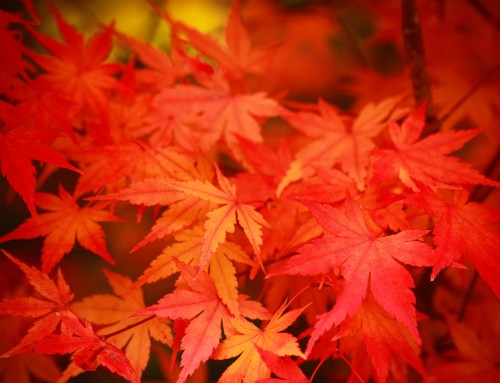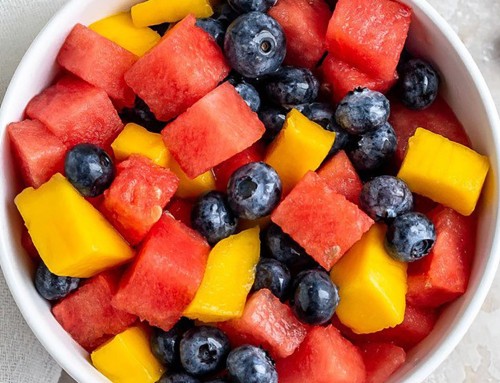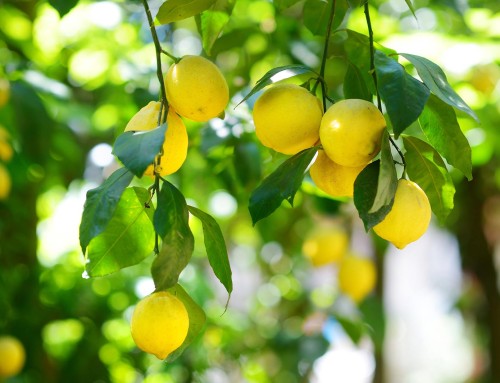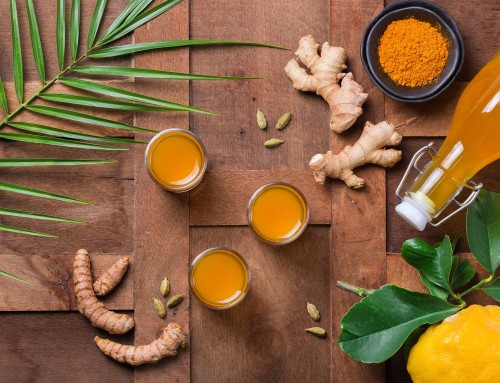Temperatures are down, wind is up, trees have changed colour and leaves are being shed and are blowing everywhere. Autumn has its own distinctive weather, colours and qualities. The air element and the vital force called Prana have become abundant in the atmosphere and the dry, rough, windy, erratic, cool, subtle, and clear Gunas or qualities now predominate. As these Gunas are shared by Vata Dosha (the principle of movement), autumn is considered the Vata season and taking a few simple steps to balance Vata is vital for maintaining optimal health.
 Why seasonal diets and routine?
Why seasonal diets and routine?
Nature is far more powerful than us tiny individuals and despite central heating and air-conditioning, our psycho-physiology is strongly affected by the changes that occur throughout the year.
Ayurveda helps us go with the flow of nature and adapt to seasonal changes. It suggests diets, seasonal routines, lifestyle choices and purification treatments such as Panchakarma, that keep us balanced and in tune with our local climate.
What is Vata season and how will I feel its influence?
Seasons, and the qualities they embody, may vary from one place to another. But in general, when the Vata Dosha’s dry, cold, light, mobile, rough, subtle, and clear qualities prevail, that is Vata season. Autumn and early winter tend to contain these attributes and is considered the season when the expansive and dry Vata qualities are most present.
During this time, you will find your feelings subtly change. Space is one of the Mahabhutas (elements of nature) that make up Vata, so a sense of clarity, expansiveness and all-possibilities may be present.
Air is Vata’s other Mahabhuta, so feelings of movement and readiness to change may be in your awareness. Air has cold and drying quality and you will feel this in your body, especially on your skin, which is considered a Vata organ.
You may find your mind more clear and agile at this time of year, though when Vata is not well balanced your mind can become erratic and lacking in decisiveness and certainty; you may also find good quality sleep becomes elusive.
Without being conscious of doing so, your habits naturally change with the seasons. In summer, you probably enjoyed cooling foods such as salads and melons. By October and November, warmer and more grounding foods such as baked root vegetables, breads, oils, dairy and thick soups may be more to your taste. These more substantial foods help balance the dry, light, and erratic nature of the Vata season.
By consciously making diet and lifestyle changes that balance the effects of each season, you can help maintain your internal sense of equilibrium throughout the year.
Navigating the ups and downs of Vata season
 Ayurveda uses the principle of opposites to maintain balance in both mind and body. Since the Vata season has dry, cold, light, windy, unpredictable and changeable qualities, you should tend towards things that supply oiliness, heat, nourishment, stability, routine, warm relationships, and a sense of groundedness.
Ayurveda uses the principle of opposites to maintain balance in both mind and body. Since the Vata season has dry, cold, light, windy, unpredictable and changeable qualities, you should tend towards things that supply oiliness, heat, nourishment, stability, routine, warm relationships, and a sense of groundedness.
To help you address any problems that may arise, or prevent problems before they arise, see a Maharishi AyurVeda Practitioner for advice. You can also familiarise yourself with the signs of Vata imbalance.
If you have a Vata body-type you will need to take special care of yourself during Vata season. Yet all of us, no matter what our underlying body-type, will be affected by the elevated Vata influence during autumn and early winter and should adjust our diet and lifestyle to ensure Vata does not go out of balance.
The following recommendations are appropriate for most people, but if you know your body-type or constitution, you can adjust your seasonal routine accordingly.
Vata Season Diet
 Whatever you eat becomes your body, so diet is the first consideration when it comes to balancing Vata. Nourishing, substantial, and unctuous foods that are high in protein, have sufficient fat, served hot, and that contain warming spices, will help maintain your reserves of moisture and keep your feet on the earth.
Whatever you eat becomes your body, so diet is the first consideration when it comes to balancing Vata. Nourishing, substantial, and unctuous foods that are high in protein, have sufficient fat, served hot, and that contain warming spices, will help maintain your reserves of moisture and keep your feet on the earth.
- Favour foods that have the sweet, sour, and salty tastes
- Reduce bitter, pungent and astringent foods
- Eat soft, mushy foods garnished with ghee or oil
- Breakfasts that include cooked grains – such as wheat, oats, rice or tapioca – are great at this time of year. You can cook them with water, milk, whey, coconut milk or almond milk. Add dried fruit as a sweetener. You can also add a little ghee or coconut oil, and nuts that have been soaked overnight
- Baked or boiled fresh fruits plus some soaked dried fruit with added nuts make a good breakfast
- Lunches can include green and root vegetables, grains, beans suitable for Vata (though less or no beans in the evening) and panir. Soups, and stews add moisture and are grounding
- Your digestive fire – called Agni in Ayurveda – is naturally high in Vata season, so this is the time when you will gain most benefit from high nutrition foods, such as meat, fish, eggs, dairy and nuts.
- Suppers can include green and root vegetables, plus grains, such as oatcakes and toast with a little ghee. You can add an easy-to-digest and well-cooked bean such as red lentils or yellow split mung dhal
- Avoid raw vegetables as they have cold and rough Gunas that increase Vata
- Avoid all cold and frozen foods (unless they are cooked)
- Reduce cooling, light, and drying foods such as potatoes, most beans, corn, crackers, millet, and dried fruit (unless soaked). Cabbage, broccoli, cauliflower, sprouts and leafy greens also tend to be Vata increasing, so eat such foods in moderation and ensure they are moist, well-cooked, have Vata-reducing spices and herbs added to them, and are sautéed or served with ghee.
Agni increases to heat up your body when the weather is cold and during the Vata season you may notice you desire more food. Just be careful and follow what your stomach is telling you and don’t over-eat.
Vata needs adequate nourishment, so avoid fasting this time of year.
Food tips for Vata season
 Lifestyle tips for Vata season
Lifestyle tips for Vata season
- Establish a steady routine for getting to bed, waking up, exercise, eating meals etc
- Get to bed by 10pm to ensure plenty of rest before dawn, and rise early to take advantage of the stillness and silence intrinsic in the early morning hours
- In the morning, ground your energy, calm your nervous system and wake up your tissues by massaging your skin with warm, organic Sesame Oil
- Follow oil massage with a warm shower, but leave a little oil on the skin to absorb throughout the day
- If the atmosphere is dry, steam baths and humidifiers can help maintain your internal moisture
- Gentle yoga exercises, pranayama breathing and Transcendental Meditation are powerful ways of balancing Vata Dosha and calm, yet energise the whole nervous system
- Vetiver, geranium, citrus and Vata Balance Aroma Oil are suitable essential oils this time of year
- Reds, oranges, yellows, and whites are balancing colour to wear during Vata season
- Wear enough clothing to stay warm throughout the day
- When out for walks, take particular care to protect your head, ears and neck from the wind and cold
- Reduce your exposure to loud noise, aggressive music, drafts, fast driving, and excessive sex
 Exercise tips for Vata season
Exercise tips for Vata season
- The early morning (6-10am) and evening hours (6-8pm) are the best times for exercise. Exercise should be lighter in the evening – say a 15-20 minute walk after supper
- Vata is aggravated by fast, mobile activities, so adopt slow, gentle, strengthening forms of exercise
- None-strenuous swimming, walking, hiking, biking, yoga, pilates and tai chi are good choices
- Exercise at about 50% to 60% of your capacity and never strain
- Breath through your nose while exercising
- Balance your activity with adequate rest and sleep to allow your tissues to fully relax and rejuvenate.
Herbal supplements for autumn
To buy products
To buy the products mentioned in this article phone +44 (0)1695 51015 or email map@maharishi.co.uk





